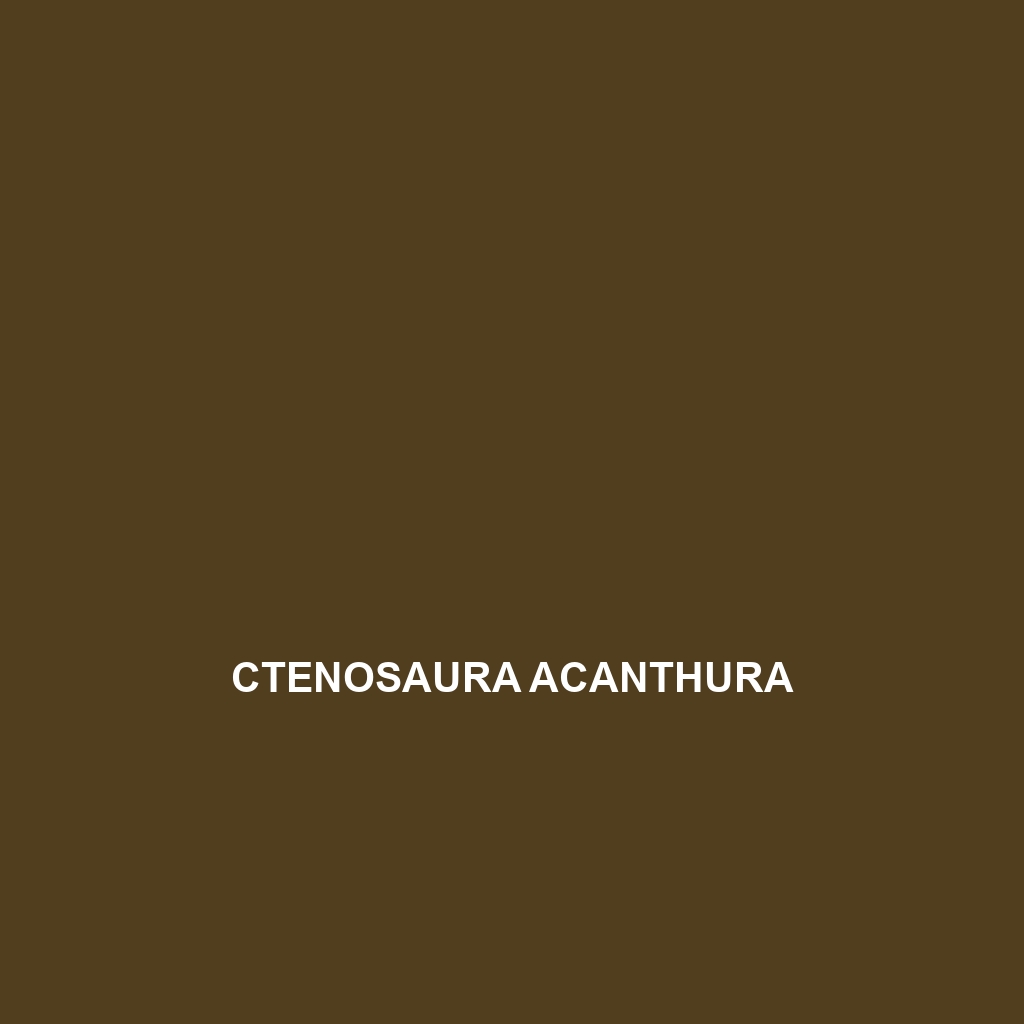Ctenosaura acanthura Species Description
Common Name: Ctenosaura acanthura
Scientific Name: Ctenosaura acanthura
Habitat
Ctenosaura acanthura, commonly known as the spiny-tailed iguana, is primarily found in the tropical dry forests and shrublands of the Pacific coast of Central America. This species is particularly abundant in Honduras, Guatemala, and parts of El Salvador. The iguana prefers environments with rocky outcrops, where it can seek refuge from predators and extreme temperatures, often dwelling in areas with abundant vegetation that provides both food and cover.
Physical Characteristics
This medium-sized lizard can reach lengths of 1 to 3 feet (30 to 90 cm), displaying a robust and elongated body. Ctenosaura acanthura is characterized by its distinct spiny dorsal crest that runs along its back, which is dark gray or brown, often with lighter stripes. Its tail is long and can also be spiny, aiding in both defense and balance. The species exhibits a well-defined set of limbs, which are strong and suitable for climbing.
Behavior
Ctenosaura acanthura is known for its diurnal lifestyle, being most active during the day. It often engages in basking behavior to regulate its body temperature. These iguanas are territorial, particularly males during the breeding season, and will often display aggressive behaviors to defend their territory. They are also proficient climbers and are often seen perched on trees or rocky outcrops, surveying their environment.
Diet
The diet of Ctenosaura acanthura is primarily herbivorous, consisting of a variety of leaves, fruits, and flowers. Common food sources include cacti, flowers from native shrubs, and the leaves of various trees. Occasionally, these iguanas may consume insects and small invertebrates as part of their diet. Their strong jaws and sharp teeth allow them to effectively feed on tough plant material.
Reproduction
Ctenosaura acanthura engages in seasonal reproduction, typically breeding during the warmer months, from late spring to early summer. The female lays clutches of 5 to 15 eggs in sandy soil or leaf litter, which incubate for several weeks before hatching. Offspring are independent upon hatching and exhibit behaviors reflective of their adult counterparts, including foraging and territorial displays.
Conservation Status
According to the International Union for Conservation of Nature (IUCN), Ctenosaura acanthura is currently evaluated as vulnerable due to habitat loss, predation, and the illegal pet trade. Conservation efforts are necessary to maintain viable populations and protect their natural habitats.
Interesting Facts
One fascinating aspect of Ctenosaura acanthura is its impressive speed; it can quickly dart away from predators, thanks to its powerful legs and agile body. Additionally, these iguanas possess an intricate social structure and often engage in complex communication through head bobbing and vocalizations.
Role in Ecosystem
Ctenosaura acanthura plays a significant role in its ecosystem by acting as both a herbivore and a prey species. By feeding on vegetation, it aids in plant community dynamics, and its activities help to disperse seeds. Additionally, these iguanas serve as prey for larger predators, contributing to the balance of the local food web.
